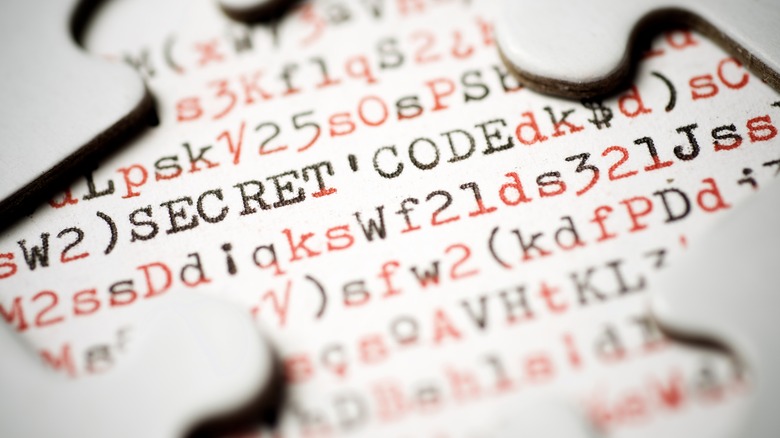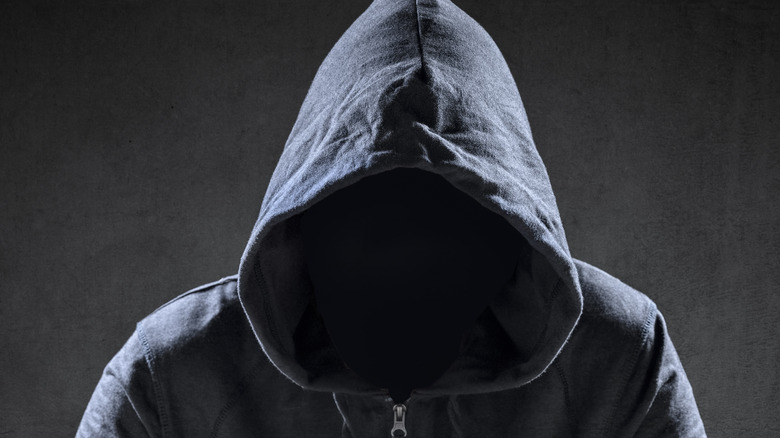The Strange History Surrounding Cicada 3301: The Internet's Most Complex Puzzle
In the annals of internet mysteries, few enigmas have captured the collective imagination of cyberspace as thoroughly as the Cicada 3301 puzzles. This cryptic challenge, originating in the darkest corners of the web, has confounded and intrigued codebreakers, cryptanalysts, and amateur sleuths since its first appearance in 2012. With its intricate web of ciphers, symbolism, and intellectual hurdles, Cicada 3301 remains one of the most captivating and perplexing online puzzles to date. Part mystery, part puzzle, and part invitation to join an exclusive and elusive group, the puzzle became a digital legend and a global fascination.
Cicada 3301 and the story that unfolded around it represents a unique chapter in the history of the internet. It illustrates the boundless potential of online collaboration and the enduring appeal of intellectual challenges. While the answers to its enigmas may remain elusive, the legacy of Cicada 3301 endures, serving as a testament to the infinite mysteries that the digital world can offer, just waiting to be unraveled by the curious and the determined.
January 2012
On January 4, 2012, a user going by "3301" posted the following message on 4chan: "Hello. We are looking for highly intelligent individuals. To find them, we have devised a test. There is a message hidden in this image. Find it, and it will lead you on the road to finding us. We look forward to meeting the few that will make it all the way through. Good luck."
Users quickly discovered that opening the image as a text document revealed a wall of text with a small string of readable text. The text contained a cipher that led to an Imgur link of a decoy solution image. Hidden info uncovered from the original image revealed a book code and a link to a subreddit that had more info about the book.
Using the code, solvers found a phone number within the book. After calling the number, they were greeted with the message, "Very good. You have done well. There are three prime numbers associated with the original .JPG image. 3301 is one of them. You will have to find the other two. Multiply all three of these numbers together and add a '.com' at the end to find the next step. Good luck. Goodbye."
It was later discovered that the other two prime numbers were the dimensions of the original 3301 image posted to 4chan, which were 509 and 503. The resulting number from multiplying all three numbers together led users to a website with a countdown clock and a cicada symbol. When the clock hit zero, the website updated to a list of geographical coordinates with the message, "Find our symbol at the location nearest you."
Off the web, into the world
With the introduction of physical coordinates, the Cicada 3301 puzzles quickly jumped from an interesting, if not convoluted, internet puzzle to a real-world scavenger hunt. There were 14 sets of coordinates that spanned across five countries around the world. An operation at this scale was a big indicator to many at the time that Cicada 3301 might be more than just someone having fun on the internet.
Going off the sets of coordinates, solvers eventually would be greeted with a flyer with a QR code and a picture of a cicada. The QR code led to another cicada image that contained a riddle, which itself led solvers to another puzzle that would eventually lead to a website. Unbeknownst to the solvers at the time, they were racing.
The website that one would eventually find after jumping through hoops with the QR code and its corresponding image was on a timer. After solving the riddle from the QR code puzzle, solvers were met with one of two options: admission into the final part of the puzzle or a message that whoever set up the puzzle wanted "the best, not the followers." Those who were quick enough to move on received a warning not to share the details of what came next.
With the finalists having presumably made it to the end or thwarted by the final puzzle, Cicada 3301 went quiet with no new updates or puzzles. That was until a month later when a post was made on the previously used subreddit that stated that the puzzles were over and that the organizers had found their "highly intelligent individuals."
One year later
Exactly one year after the original Cicada 3301 image was posted, another one was posted once again on 4chan. Though there had been many imitations in the year since the original's release, the image's PGP signature confirmed that this new image was the real deal and that the hunt for "intelligent individuals" was back on.
The second set of Cicada 3301 puzzles proved to follow a similar pattern to the original puzzles, with the new inclusion of puzzles centered around audio files and a Twitter account. The penultimate phase of 2013's puzzles also featured the same set-up of multiple sets of coordinates, which led to posters with QR codes.
Just as the previous year had gone, solvers made their way through each layer of puzzles all the way up to the end. What exactly happened after that is unknown, especially because there was no final message declaring that another set of "highly intelligent individuals" had been found.
4chan to Twitter
One year later, another Cicada 3301 image would emerge. However, this time, the image in question emerged on Twitter, now known as X, rather than 4chan. Much the same as before, the initial image would send solvers down a rabbit hole of increasingly complicated puzzles.
However, an oddity was present in 2014's puzzles that hadn't been seen in years past. Solvers in 2014 were led to a book entitled Liber Primus, which was almost entirely made up of symbols that had been revealed in the previous two sets of puzzles.
The deciphered portions of the books contain many ideological writings, as well as smaller puzzles. Much of the Liber Primus remains undeciphered, and there haven't been any new puzzles since 2014. In 2016, an authentic Ciada 3301 post asserted that the "Liber Primus is the way." Aside from that, and a post in 2017 that simply warned, "beware false paths," there have been no new updates from Cicada 3301.
The puzzles
Many of Cicada 3301's puzzles were initially presented as cryptic images. Solvers were required to examine these images closely, searching for hidden clues, messages, or ciphers. Some images contained QR codes that, when deciphered, directed participants to new puzzles or web pages. Others concealed information through visual tricks and steganographic techniques, such as concealing text within the pixel data.
The challenges were not limited to visual elements; some included audio puzzles. Some of these puzzles involved spectrograms, where the visual representation of sound waveforms concealed hidden messages or codes. Participants had to use specialized software to convert the audio data into images and then analyze them for clues.
The puzzles often incorporated references to classic literature and books. Solvers were required to identify specific passages from literary works or historical texts related to the theme of the puzzle. These references were used to unlock further steps in the challenge, testing the participants' knowledge of literature and ability to make connections.
Cicada 3301 frequently employed cryptographic ciphers to encode messages. Solvers encountered a wide array of ciphers, including Caesar ciphers, Vigenère ciphers, and more complex algorithms. Decrypting these messages often served as the key to unlocking the next stage of the puzzle.
Participants were also often led to various websites and online resources, which they had to dissect and analyze for hidden information. This could involve examining the source code of web pages, identifying patterns in URLs, and finding links to hidden or password-protected content.
A hallmark of Cicada 3301 puzzles was their layered complexity. Solvers would often need to solve multiple puzzles, one leading to another, creating a multi-step process that gradually revealed the ultimate solution. This layering increased the challenge and required participants to remain vigilant and persistent.
The people who solved the puzzles
Cicada 3301's puzzles attracted a diverse, international community of solvers, united by their passion for intellectual challenge and desire to uncover the mysteries within the enigma. These solvers, often working in collaborative online communities, put their skills to the test, leveraging their expertise in cryptography, computer science, and an array of other disciplines. The global nature of this phenomenon highlighted the power of the internet to bring together people from all corners of the world to tackle complex problems.
Given the nature of the puzzles, there are lots of different individuals online who claim to have solved one of the puzzles and made it to the final stages. However, this can be extremely difficult to verify, and a very small number of claimed solvers can be verified as legitimate.
One such solver is Joel Eriksson, who made it to the QR code stage of the puzzles before being met with the message that he hadn't been fast enough. Another solver, Marcus Wanner, made it a step beyond and has some insight into what the next phase looked like. According to Wanner, he was questioned on his beliefs concerning privacy and freedom. He said that beyond the questioning was a secret website to communicate through, where he and other finalists would be given tasks. However, due to being too slow to complete the tasks, the website was suddenly shut down.
The reason behind Cicada 3301
Even as Cicada 3301 puzzles ceased to emerge, many questions remained unanswered. The identity and purpose of the individuals or organization behind it have never been definitively revealed. The true nature of the recruitment process and whether anyone successfully completed it remains a mystery. Cicada 3301 serves as a testament to the enduring allure of unsolved mysteries and enigmatic challenges, keeping the fires of curiosity alive in the digital age.
Accounts from solvers such as Marcus Wanner seem to indicate some kind of secretive group dedicated to some ideal of freedom and privacy. However, anything more concrete beyond this simple pair of ideals is simply too difficult to nail down due in no small part to the very limited information available about the group at the center of the puzzles. The lack of information has led to wild speculation about who could be behind the puzzles and what their true purpose could be.
Conspiracies
With the identity and motivations of the creators behind Cicada 3301 remaining shrouded in mystery, a plethora of theories and speculations have emerged, ranging from the belief that it was a government recruitment tool to the notion that it was an elaborate art project. Some even suggested it might be an elaborate prank. The lack of concrete information about its originators only fueled the flames of intrigue and speculation.
One of the most pervasive theories suggests that Cicada 3301 is a recruitment tool for a government agency or intelligence organization. The complexity of the puzzles, the intellectual rigor required to solve them, and the nature of the challenges are all cited as evidence. Some proponents of this theory even go so far as to claim that successful solvers are covertly invited to join clandestine government operations.
Another common theory is that Cicada 3301 is the initiation process for a secret society or cult. The intricate puzzles and the air of exclusivity surrounding the challenges have led some to believe that it serves as a recruitment tool for an elite, underground organization. This theory often ties in with notions of the Illuminati or other secretive groups that supposedly control world events.
Given the puzzles' heavy focus on cryptography and digital skills, some conspiracy theorists suggest that Cicada 3301 is a front for hacking or cybersecurity groups. They argue that the puzzles serve as a vetting process for recruiting skilled hackers and cybersecurity experts who could be employed for various purposes, including cyber espionage.
On the flip side of the darker theories, some believe Cicada 3301 is nothing more than an elaborate art project or a social experiment. According to this view, the puzzles are intended to provoke thought and creativity rather than recruitment, and secrecy and exclusivity are part of the experiment.
Legacy and movie
Cicada 3301 remains one of the most enthralling and mysterious stories in the realm of internet puzzles. Its impact extends far beyond the online forums where it first appeared, as it continues to inspire and perplex those who seek to uncover its secrets. Whether one views it as a recruitment tool, an art project, or an elaborate game, Cicada 3301's enigma endures as a testament to the enduring allure of cryptic challenges and the collaborative power of the internet.
In 2021, the movie "Dark Web: Cicada 3301" — directed by and co-starring Alan Ritchson, who leads Prime Video's "Reacher" — was released. The film is loosely based on the phenomenon, albeit with some large creative liberties that give the story a much more sinister undertone.
Though the original Cicada 3301 puzzles ceased to emerge after several years, the legend of this enigma lives on. Its legacy can be discerned in the numerous online puzzle communities that continue to thrive, the intellectual curiosity it ignited in countless individuals, and the continued fascination with cryptographic challenges. Moreover, Cicada 3301 has become an emblem of the darker, more enigmatic side of the internet, illustrating the potential for the mystique of anonymity and the influence of online communities in generating phenomena of great interest.









